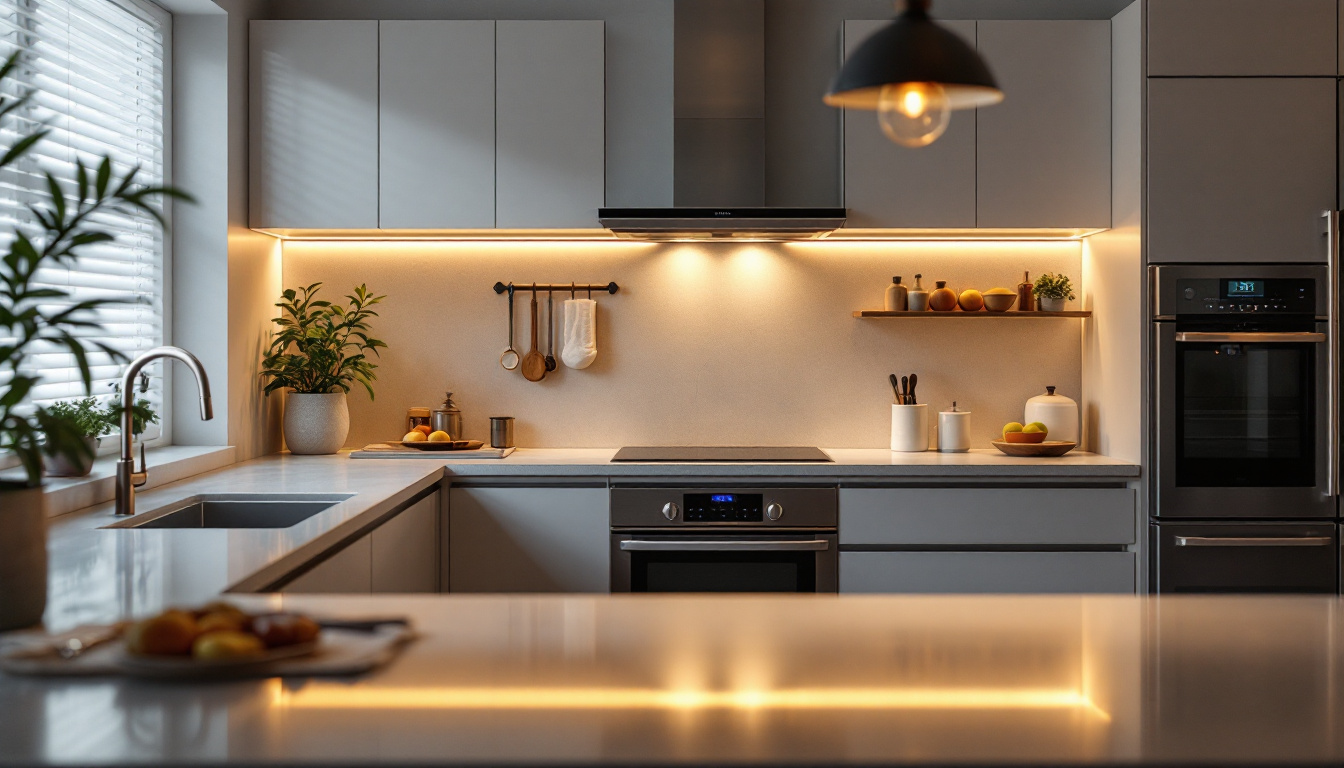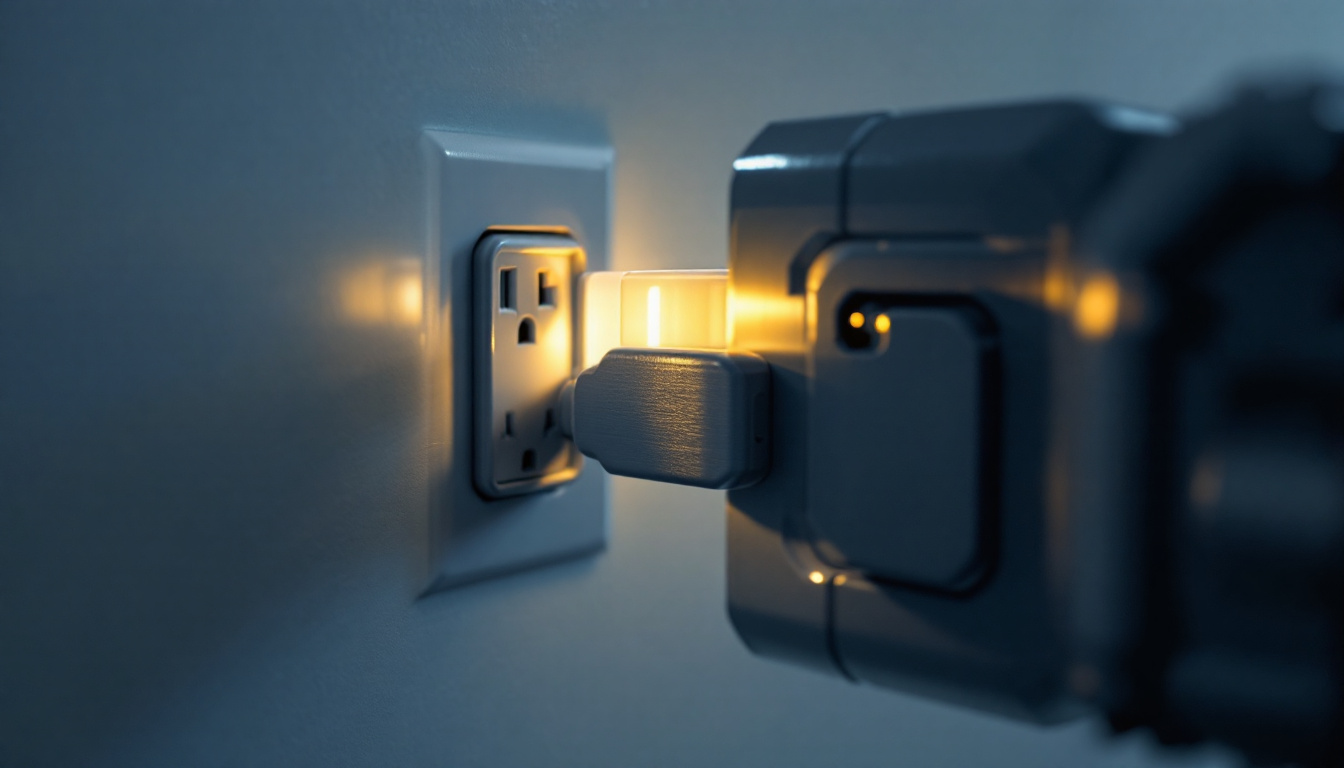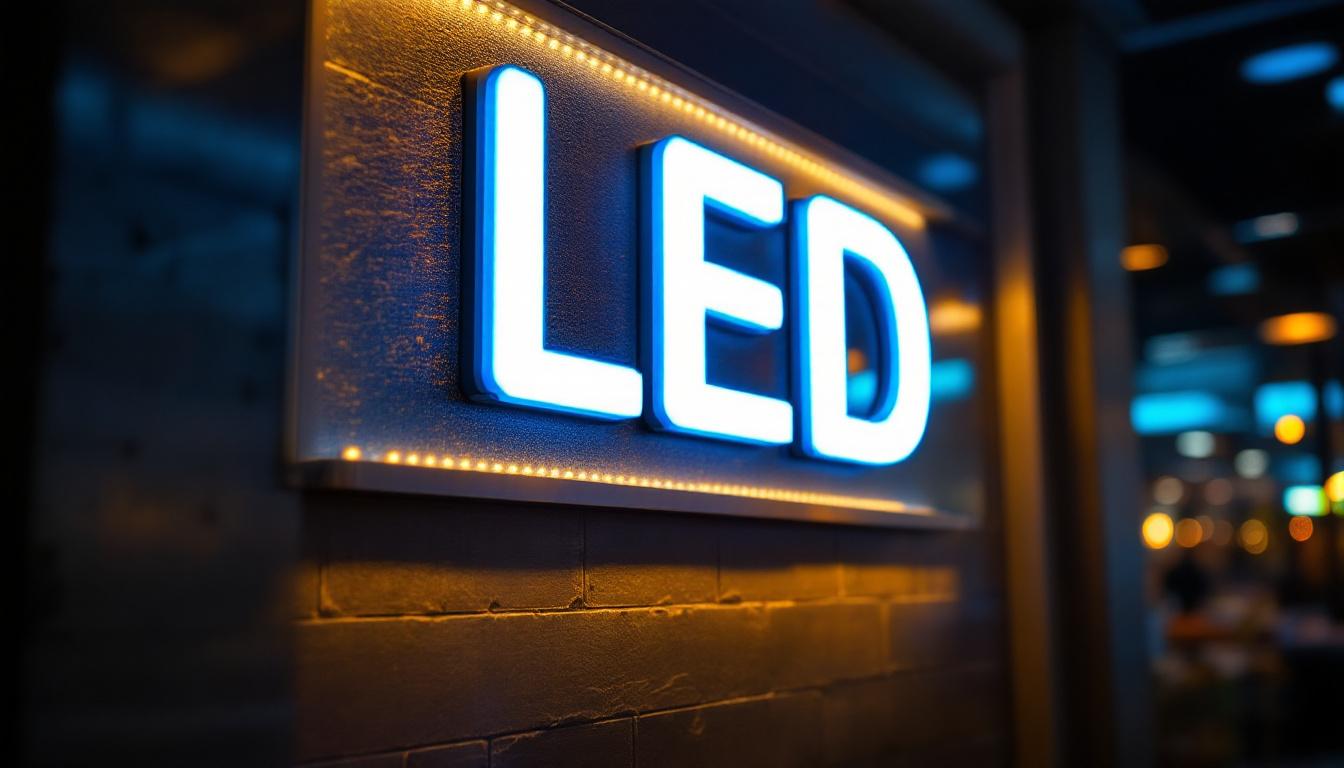
under cabinet lighting is an essential aspect of modern kitchen design, providing both functionality and aesthetic appeal. For lighting contractors, understanding the nuances of under cabinet lighting can significantly enhance the quality of their work and the satisfaction of their clients. This article delves into the key facts and considerations that lighting contractors should keep in mind when working with under cabinet lights.
Under cabinet lighting serves multiple purposes in a kitchen environment. It not only illuminates workspace areas, making it easier to prepare meals and perform other tasks, but it also enhances the overall ambiance of the kitchen. Proper lighting can transform a mundane kitchen into a vibrant, inviting space.
One of the primary reasons for installing under cabinet lights is to improve functionality. When preparing food, adequate lighting is crucial for safety. Shadows created by overhead lights can obscure important details, such as knife work or the placement of ingredients. Under cabinet lights eliminate these shadows, providing a well-lit workspace.
Moreover, under cabinet lighting can help prevent accidents in the kitchen. By ensuring that all areas are well-lit, contractors can help their clients avoid potential hazards, such as slipping or cutting themselves due to poor visibility. This is particularly important in kitchens where multiple activities take place simultaneously, such as cooking, cleaning, and entertaining. The right lighting can also assist in identifying spills or messes quickly, enabling immediate cleanup and further enhancing safety.
Beyond functionality, under cabinet lighting contributes significantly to the aesthetic appeal of a kitchen. It can highlight beautiful countertops, showcase decorative tiles, and create a warm, inviting atmosphere. The right lighting can accentuate design elements and add depth to the overall space.
Lighting contractors can offer clients a variety of options, from warm white to cool white lights, allowing them to choose the ambiance that best suits their kitchen design. This flexibility is a key selling point for contractors aiming to provide personalized service. Additionally, the use of dimmable LED options can further enhance the versatility of under cabinet lighting, allowing homeowners to adjust the brightness according to the time of day or the mood they wish to create. For instance, a bright, vibrant setting may be ideal for meal prep, while a softer glow can foster a cozy atmosphere during dinner parties or family gatherings.
Furthermore, integrating under cabinet lighting with smart home technology can elevate the kitchen experience even more. Homeowners can control their lighting through voice commands or mobile apps, adjusting settings without needing to reach for a switch. This modern convenience not only adds a layer of sophistication to the kitchen but also aligns with the growing trend of smart home solutions, making under cabinet lighting an essential feature in contemporary kitchen design.
Understanding the various types of under cabinet lighting is crucial for lighting contractors. Each type has its own set of advantages and disadvantages, and knowing these can help contractors make informed recommendations to their clients.
LED strip lights have gained immense popularity in recent years due to their versatility and energy efficiency. These lights can be easily installed under cabinets and can be cut to fit any space. They are available in a variety of colors and brightness levels, allowing for customization based on the client’s preferences.
Additionally, LED strip lights have a long lifespan and consume significantly less energy compared to traditional lighting options. This makes them an attractive choice for environmentally conscious clients looking to reduce their energy bills. Furthermore, many LED strip lights come with dimming capabilities, allowing users to adjust the brightness according to the time of day or activity, whether it’s cooking, reading, or entertaining guests. The adhesive backing on many strips also simplifies installation, making it possible for homeowners to change the lighting design without professional help.
Hardwired fixtures are another common option for under cabinet lighting. These fixtures are directly connected to the electrical system of the home, providing a clean and seamless look. They come in various styles and designs, from traditional to modern, making it easy for contractors to find options that suit their clients’ tastes.
While hardwired fixtures may require more installation work, they often provide a more permanent solution compared to plug-in options. This can be particularly appealing for clients looking for a long-term investment in their kitchen lighting. Moreover, hardwired fixtures can be integrated with smart home systems, allowing for remote control and automation. This feature not only enhances convenience but also adds a layer of sophistication to the kitchen environment. Clients may appreciate the ability to set schedules or control their lighting with voice commands, creating a truly modern kitchen experience.
Plug-in lights are typically easier to install than hardwired fixtures, making them a popular choice for DIY enthusiasts. These lights can be simply plugged into an outlet and placed under cabinets, providing immediate illumination without the need for extensive electrical work.
However, plug-in lights may not offer the same level of aesthetic appeal as hardwired options. Contractors should discuss the pros and cons of each option with their clients to help them make informed decisions. Additionally, plug-in lights often come in various styles, including portable options that can be moved around as needed. This flexibility can be particularly useful in multi-functional spaces where lighting needs may change frequently. Clients might also consider plug-in lights with built-in sensors that automatically turn on and off based on movement, enhancing both convenience and energy efficiency in the kitchen setting.
Proper installation is crucial for maximizing the benefits of under cabinet lighting. Lighting contractors should be aware of several key considerations to ensure a successful installation.
The placement and spacing of under cabinet lights can significantly impact their effectiveness. Ideally, lights should be installed towards the front edge of the cabinet to minimize shadows and maximize illumination on the work surface.
Contractors should also consider the spacing between lights. For LED strip lights, a common guideline is to space them approximately 24 inches apart. However, this may vary based on the brightness of the lights and the specific needs of the kitchen.
When installing hardwired fixtures, ensuring a proper power supply and wiring is essential. Contractors should assess the existing electrical system and determine whether additional circuits are needed to support the new lighting. This is particularly important for larger kitchens with multiple fixtures.
For plug-in lights, contractors should consider the location of outlets. It’s important to ensure that the outlets are easily accessible and can accommodate the power needs of the lights being installed.
As energy efficiency becomes increasingly important in modern design, lighting contractors should prioritize sustainable options for under cabinet lighting. This not only benefits the environment but also appeals to clients looking to reduce their energy consumption.
LED lighting is one of the most energy-efficient options available for under cabinet lighting. Contractors should educate clients on the benefits of LED technology, including lower energy costs and longer lifespans. This can lead to significant savings over time, making it an attractive option for budget-conscious clients.
Additionally, contractors can explore other energy-efficient lighting technologies, such as compact fluorescent lamps (CFLs) or smart lighting systems that allow for remote control and scheduling. These options can further enhance energy savings and provide added convenience for clients.
Smart technology is revolutionizing the way homeowners interact with their lighting systems. By incorporating smart under cabinet lights, contractors can offer clients greater control over their kitchen lighting.
Smart lights can be programmed to adjust brightness levels based on the time of day or can be controlled remotely via smartphone apps. This not only enhances convenience but also allows for greater energy efficiency by ensuring lights are only used when needed.
Even experienced lighting contractors can make mistakes when it comes to under cabinet lighting. Being aware of common pitfalls can help ensure a successful installation and satisfied clients.
One of the most common mistakes is underestimating the amount of light needed for a kitchen workspace. Contractors should assess the specific needs of the kitchen and recommend adequate lighting to ensure that all areas are well-lit. This may involve using multiple fixtures or opting for brighter bulbs.
It’s also essential to consider the color temperature of the lights. Warmer tones may create a cozy atmosphere, while cooler tones can enhance visibility. Contractors should discuss these options with clients to find the right balance.
Another mistake is failing to consider the overall design of the kitchen when selecting under cabinet lighting. The fixtures should complement the existing decor and style of the kitchen. Contractors should take the time to understand the client’s vision and recommend lighting options that enhance the overall aesthetic.
Ignoring design elements can lead to a disjointed look that detracts from the kitchen’s appeal. By carefully selecting fixtures that align with the client’s style, contractors can create a cohesive and attractive lighting scheme.
Under cabinet lighting is a vital component of modern kitchen design, offering both functional and aesthetic benefits. For lighting contractors, understanding the various types of under cabinet lights, installation considerations, energy efficiency, and common mistakes can lead to successful projects and satisfied clients.
By staying informed about the latest trends and technologies in under cabinet lighting, contractors can provide valuable insights and recommendations to their clients. This not only enhances their professional reputation but also contributes to the overall success of their business.
Incorporating under cabinet lighting into kitchen designs is not just about illumination; it’s about creating spaces that are both beautiful and functional. With the right knowledge and approach, lighting contractors can elevate their projects and help clients achieve their dream kitchens.
Ready to bring your kitchen designs to life with the best in under cabinet lighting? At LumenWholesale, we provide lighting contractors with the highest quality, spec-grade lighting products at prices that can’t be beaten. Our extensive selection is designed to meet the highest industry standards, ensuring every installation shines with reliability and performance. Take advantage of our hassle-free bulk buying and free shipping to get your premium lighting solutions at the best value. Elevate your lighting projects today by visiting Wholesale Lighting at the Best Value and discover the LumenWholesale difference!

Discover how LED light bulbs can revolutionize your lighting installation projects with enhanced efficiency, longevity, and eco-friendliness.

Discover the essential guide for lighting contractors on wall outlet plug locks.

Discover how recessed lighting fixtures for drop ceilings can significantly cut costs for lighting contractors.

Discover how sign LED lighting can transform your business by attracting more contracts and enhancing your project portfolio.